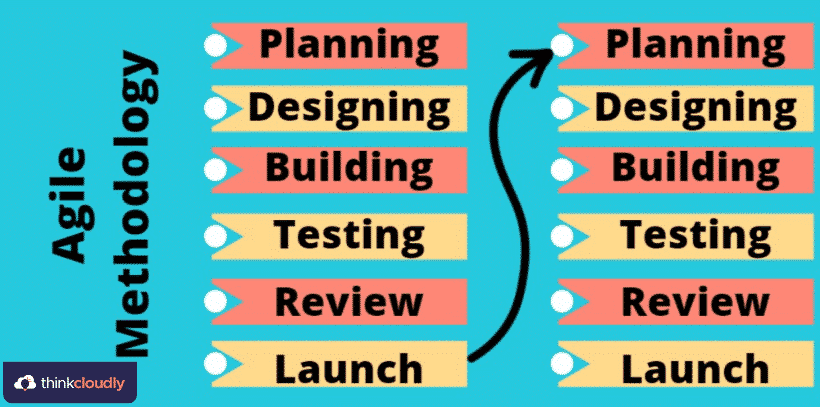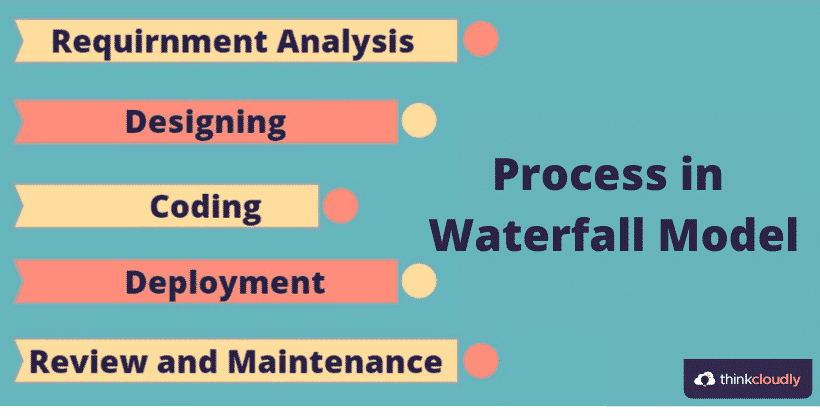Is doing something in a faster and more effective manner bad for someone?
It’s not bad for me, and I don’t expect you to rely on the same path.
The same thing goes with software development and its process. What is bad with developing software in a faster and more effective manner?
So, if you believe in going efficiently to perform tasks, let’s look over this method for you.
Agile Methodology:
As the name says, Agile methodology is nothing more than an agile method of developing software.
The concept is deep to dive into, but as it is deeper, there are more misconceptions. Let’s deal with them first to make understanding crystal clear.
Agile methodologies have brought about a revolution in the realm of science and engineering, marking an astonishing departure from traditional software development practices. With its dynamic and iterative approach, Agile methods in science engineering have ushered in an era of unprecedented progress and efficiency. This groundbreaking shift enables teams to adapt swiftly to changing requirements, fostering collaboration, and promoting customer-centric development. By prioritizing flexibility, continuous improvement, and customer feedback, Agile methodologies have not only accelerated the pace of innovation but have also significantly enhanced the quality of software products, making them more attuned to the evolving needs of the scientific and engineering communities. In this blog, we will explore how Agile methodologies have sparked an insane improvement in the conventional methods of software engineering, shaping a brighter future for science and engineering endeavors.
Misconceptions over Agile Methodology:
Many speakers say that the Agile methodology is a pre-descriptive method of performing the task. In contrast, another part believes that it is a proper format working in which a team can achieve the best software development.
None of the above analogies is completely true or false at the same time.
So what is exactly Agile methodology? It’s the main plan. Let’s go deep into it.
What is Agile Methodology?
Logically Agile is neither a method nor a format. It’s a philosophy based on which any team can develop software. It states certain methodologies based on which we can complete development in a more efficient method than the traditional waterfall model in software engineering.
What’s that waterfall method in software engineering? We at Thinkcloudly believe in the complete unquestionable description. So, let’s clear it out.

Boost your earning potential with Scrum expertise. Explore our certified Scrum courses for a high-paying career
- Explore SAFe Agilist Certification
Waterfall Model:
The waterfall model in software engineering is a pre-described set of steps that must be followed to achieve better software.
The steps involved are:
- Requirement analysis: It is a process of talking with the stakeholders and analyzing the requirement of the software we need, and later checking the efficiency both on a technical and an economic basis.
- Planning: Based on the analysis made in the first step, a team plans the operational structure for the whole team in the project. This step consists of drawing data flow diagrams, making E-R diagrams, and more.
- Designing: This phase includes designing the code formats, for example, designing the algorithms for the codes needed for the development.
- Coding: As the name states, this phase includes the coding part based on the plan deployed and the design made.
- Testing: This is the most needed part we hold. There is no means of developing anything if it isn’t efficient, and how can we judge the efficiency of the developed product?
Here, testing jumps in the game. Whatever we develop goes over various steps of testing before deployment. There are various testing, such as ∝ – testing ( testing by team members) and β – testing (testing by a group of knowing ones ). - Deployment: As the name states, this phase includes the process of deploying the product developed in the market.
- Maintenance: Maintenance is also one of the most needed phases in the development cycle. It includes taking care of software after deployment. It includes corrective, preventive, perfective, and adaptive software maintenance.
So, Agile methodology is the philosophy to implement the waterfall model better.
The core behind Agile methodology:
Agile methodology is based on an iterative manner of development which facilitates us to maintain the changes coming in a race with time as per the need of stakeholders.

The complete process of development passes through various iterations before deployment. This gives us a bounce over traditional methods, i.e. we can add the updates whenever we need. At the same time, we get an edge on faster implementations of improvements as we go over iteration methods.
This core reason for improvement and faster implementation was the expected pull toward Agile methodology. Nowadays, leading companies rely on it, and some on the traditional model are switching towards Agile.
Advantages of Agile methodology:
- It is faster and more reliable.
- We can perform iterations when needed.
- The tasks are broken under various sub-tasks, which gives an edge for iterations.
- The development is easily trackable due to progress based on sub-tasks.
Key points to take home:
- Agile methodology is a philosophy following which we can develop efficient and improved software.
- It is an improvement in traditional models like the waterfall model.
- The waterfall model is an SDLC ( Software Development Life Cycle ) model which follows the steps: requirement analysis, planning, designing, coding, testing, deployment, and maintenance.
- It add-ons the concept of iterative development and leads to easy and faster updates in software.











